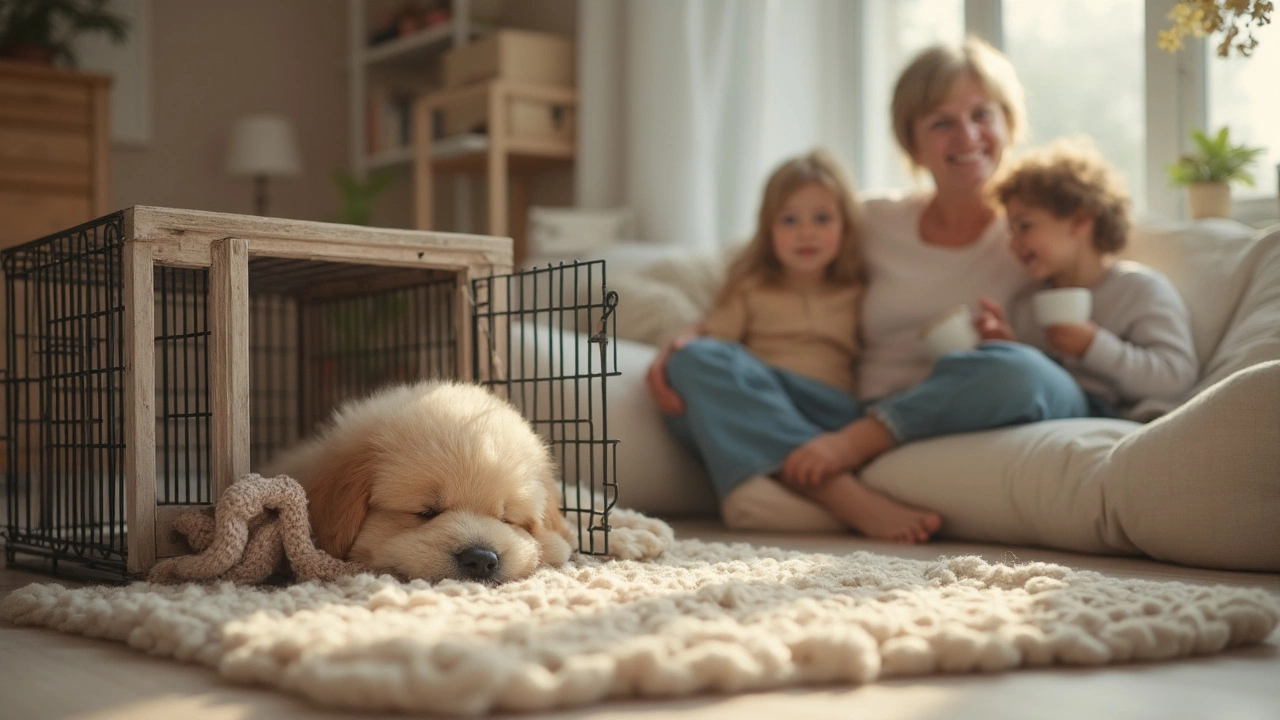Puppy Naps Made Easy: Simple Steps for a Restful Pup
Got a new puppy who’s constantly snoozing on the couch or under your desk? It’s cute, but a good nap spot and routine will help them grow healthy and keep you from stepping on stray toys at 3 am. Below are down‑to‑earth tips you can start using tonight.
1. Pick the Right Spot for a Cozy Nap Area
First, choose a quiet corner where the temperature stays stable – not too hot, not too chilly. A low‑traffic area near a wall works because your puppy feels safe with a solid backing. Lay down a firm, washable mat or a puppy‑size bed. If you’ve got a crate, place the bed inside; crates give a den‑like feel that many pups love.
Make the space inviting. Add a soft blanket that smells like you – a piece of clothing you wore recently works wonders. Puppies love familiar scents and will settle faster. Keep the area free of chew toys or loud gadgets; a calm environment signals it’s nap time.
2. Build a Simple Bedtime Routine
Routines are the secret sauce. Pick a consistent bedtime, ideally the same hour each night, and stick to it. Start about 15 minutes before sleep with a short walk or a play session. This burns off excess energy and signals that winding down is coming.
After the walk, offer a light snack – a small bite of kibble or a treat – then guide your puppy to the nap spot. Use a calm voice, say the same phrase each night (like “time to snooze”), and gently place them on the bed. If they whine, wait a minute, then reassure them without picking them up. Over time they’ll link the phrase with sleep.
Turn off bright lights. Many owners wonder whether to leave a night‑light on. A dim lamp or a low‑glow nightlight can soothe a nervous pup, but a completely dark room also works if your puppy is calm. Test both and see what your dog prefers.
Finally, keep the room at a comfortable 18‑21 °C (65‑70 °F). Too warm can cause restlessness, while a chill may make them curl up tighter and wake up shivering.
Stick to these steps for a week and you’ll notice longer, deeper naps. Your puppy will start to self‑settle, and you’ll get a few more uninterrupted hours of sleep.
Got questions about whether to let your puppy sleep in your bedroom? The short answer: it’s fine if you’re comfortable, but make sure the bed area stays safe. Use a low‑profile pillow or a dedicated pet bed on the floor rather than the main mattress to avoid accidental rolls.
When you’re ready to upgrade, Comet’s Pet Shopping Haven offers a range of breathable puppy beds, calming blankets, and crate mats that fit any budget. Pair a comfy bed with a soothing nightlight for the ultimate nap setup.
With the right spot, a predictable routine, and a few handy products, your puppy’s naps will become quick, peaceful, and stress‑free – for both of you.
Posted By Bryndle Redding On 14 Jun 2025 Comments (0)
Should I Shut the Crate Door When My Puppy Naps? Practical Guidance for Puppy Owners
Wondering if you should close the crate door when your puppy is napping? This article breaks down the pros and cons of keeping the crate door closed or open during naps. You'll find clear tips for making crate time a positive experience, practical safety advice, and what to watch for to make sure your puppy feels secure. Learn how to spot signs of discomfort and help your puppy feel at ease with crate time. Know exactly when and why to close (or leave open) that crate door for the best rest—for you and your pup.
READ MORE